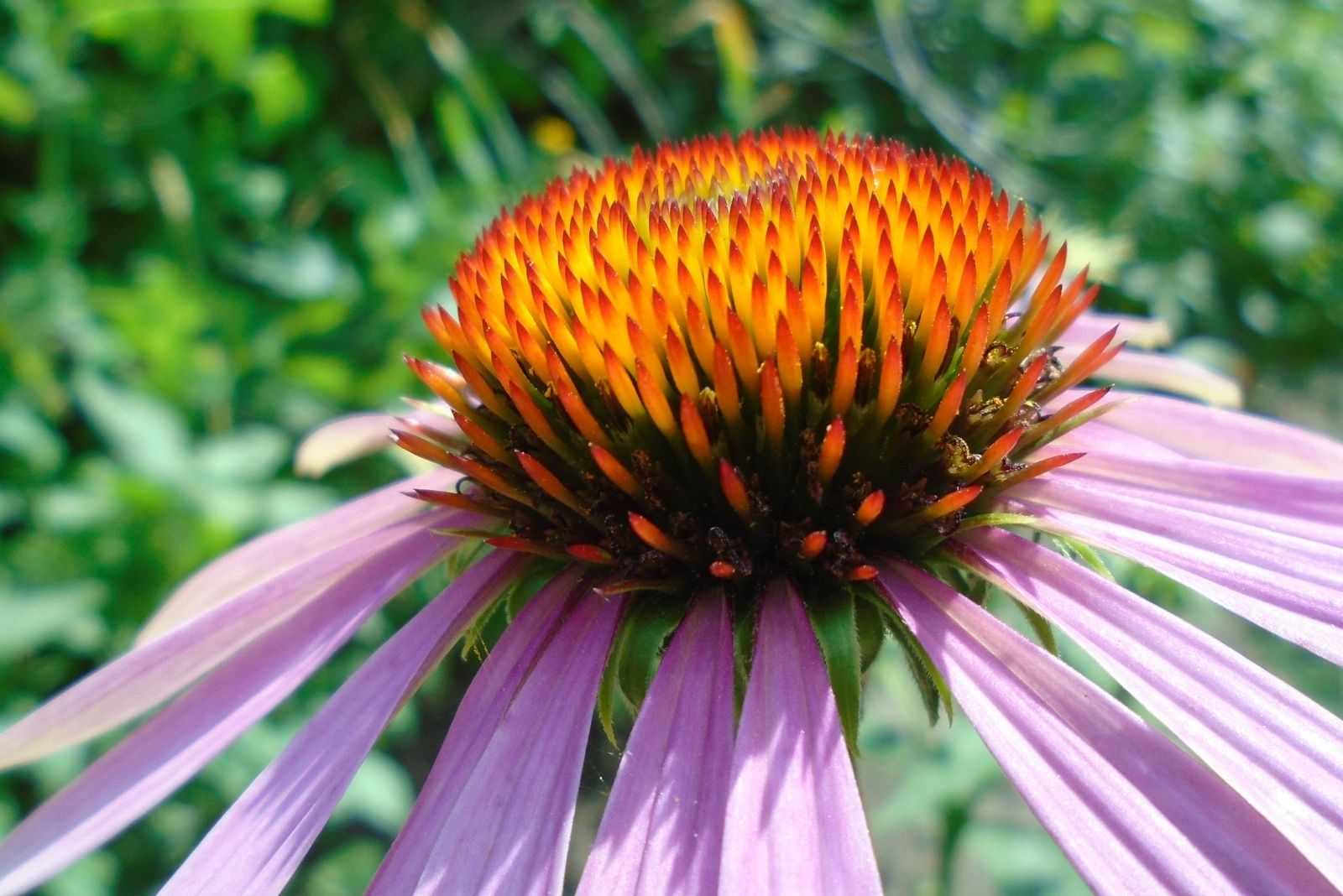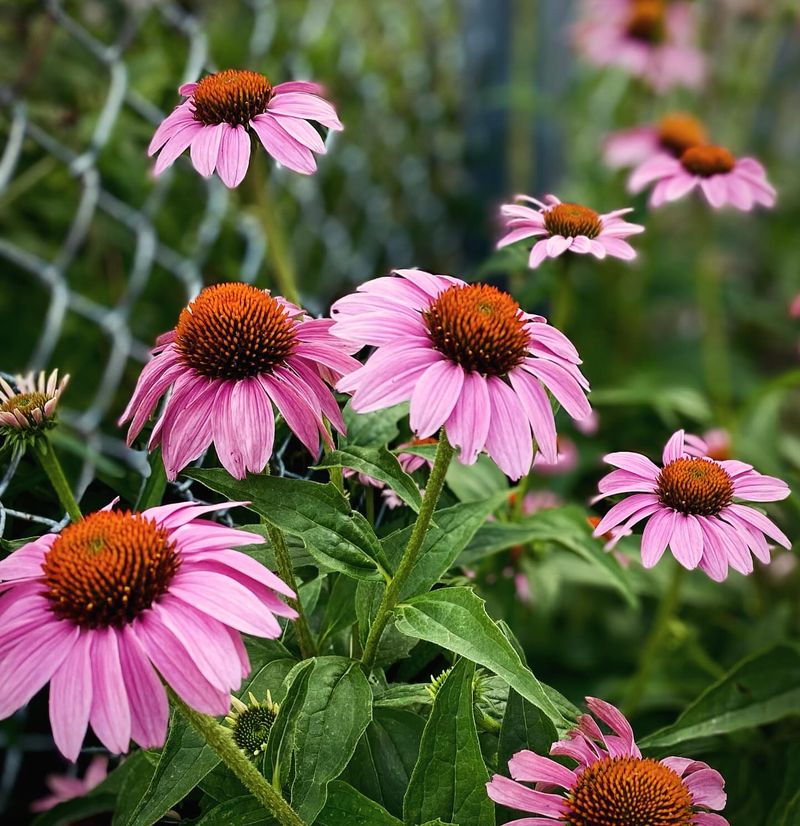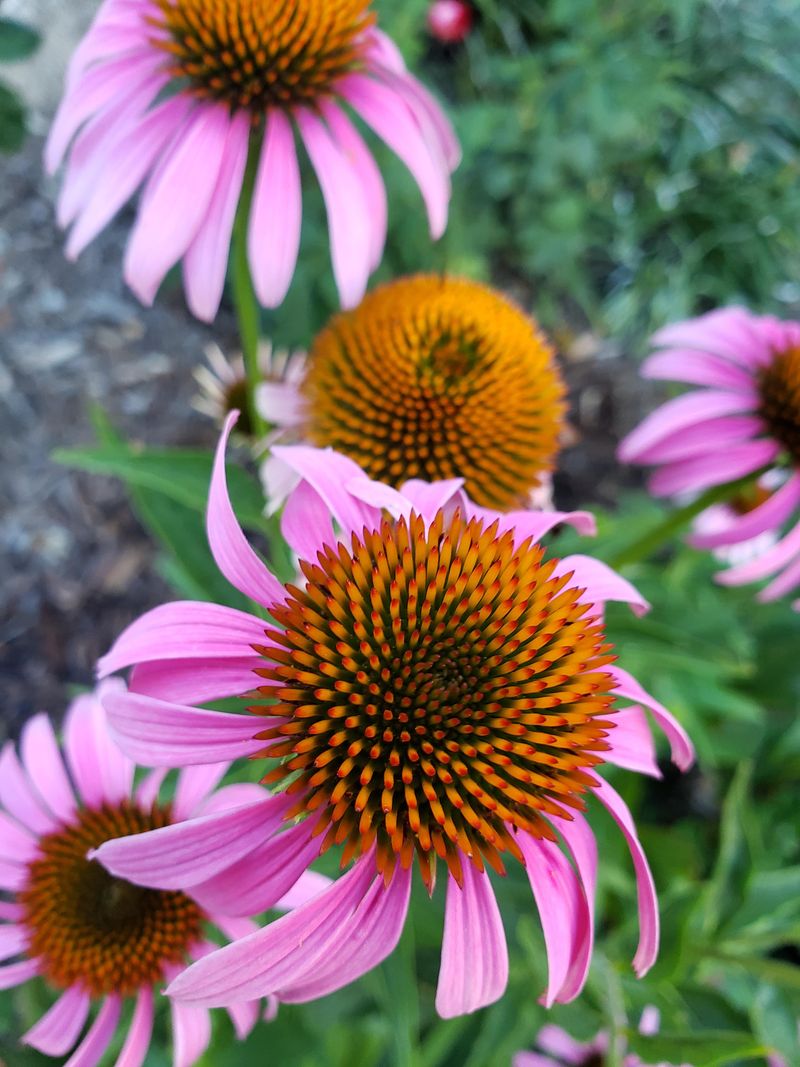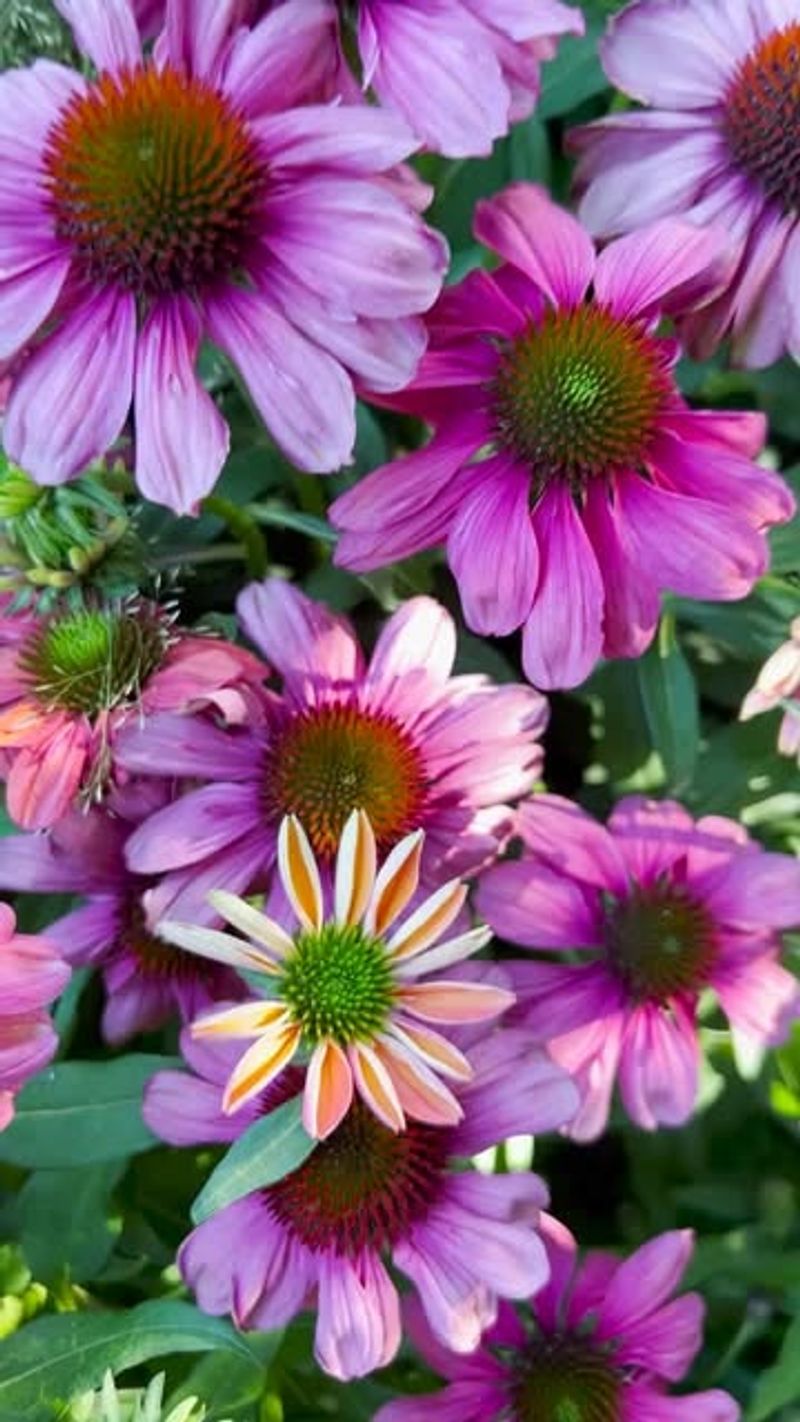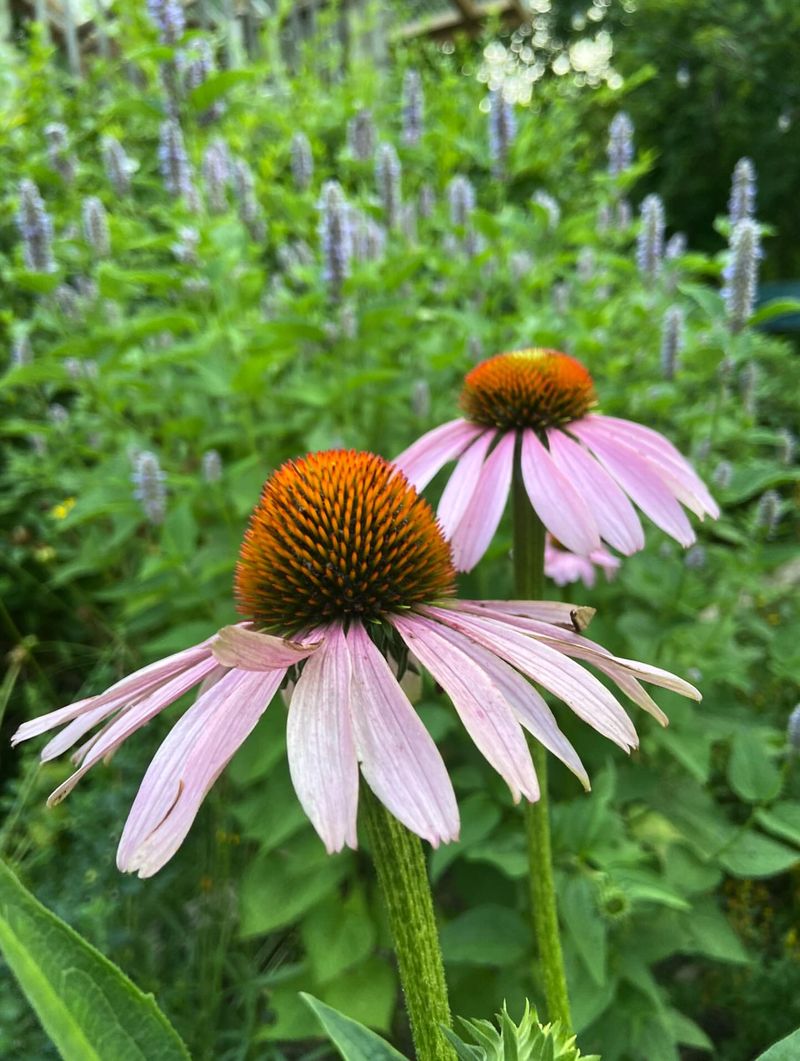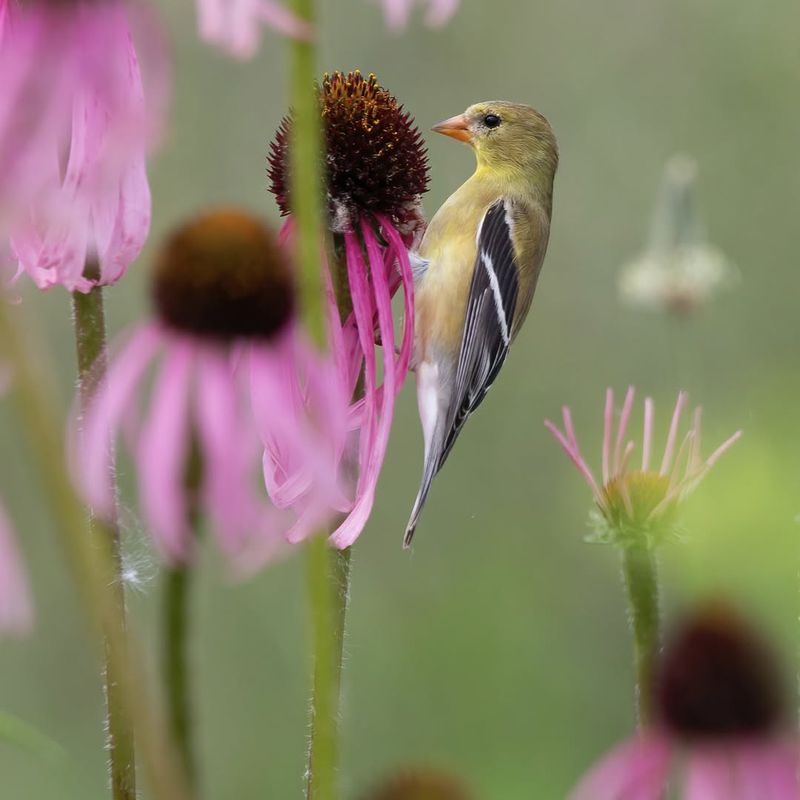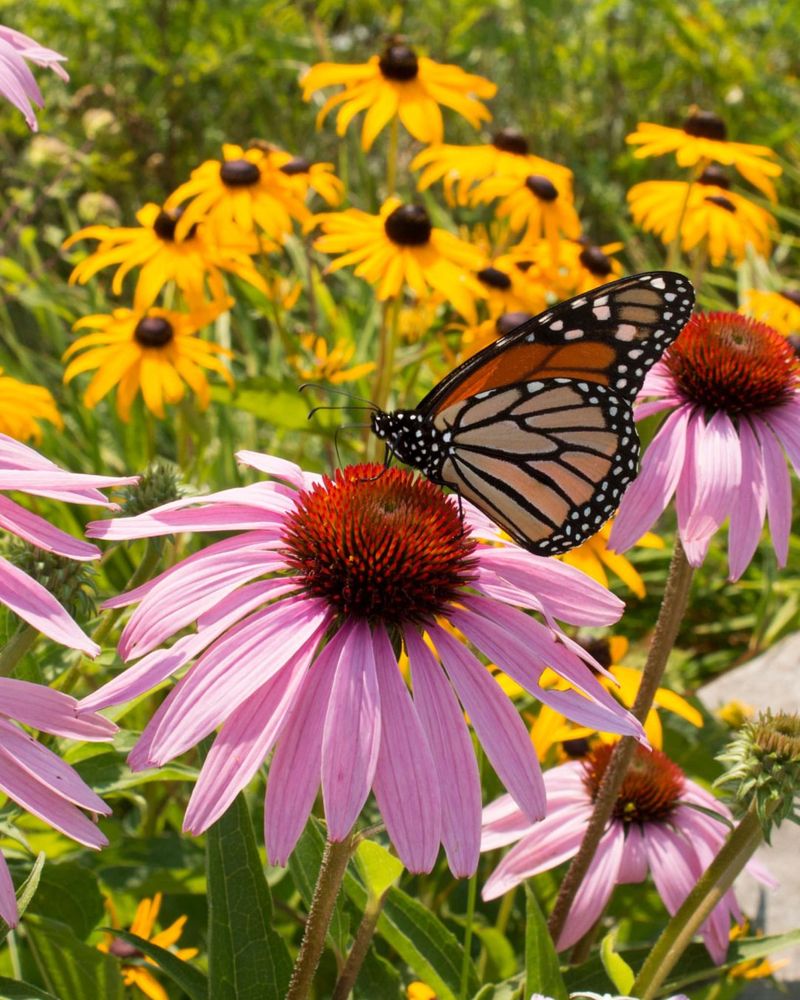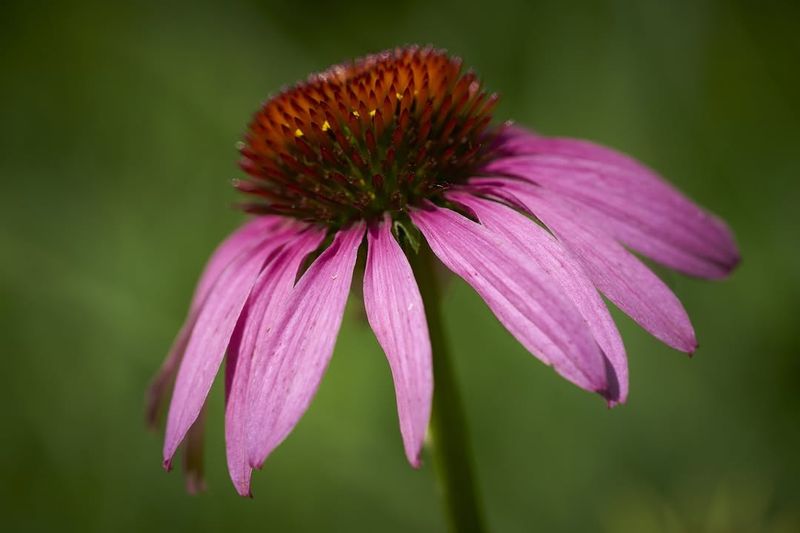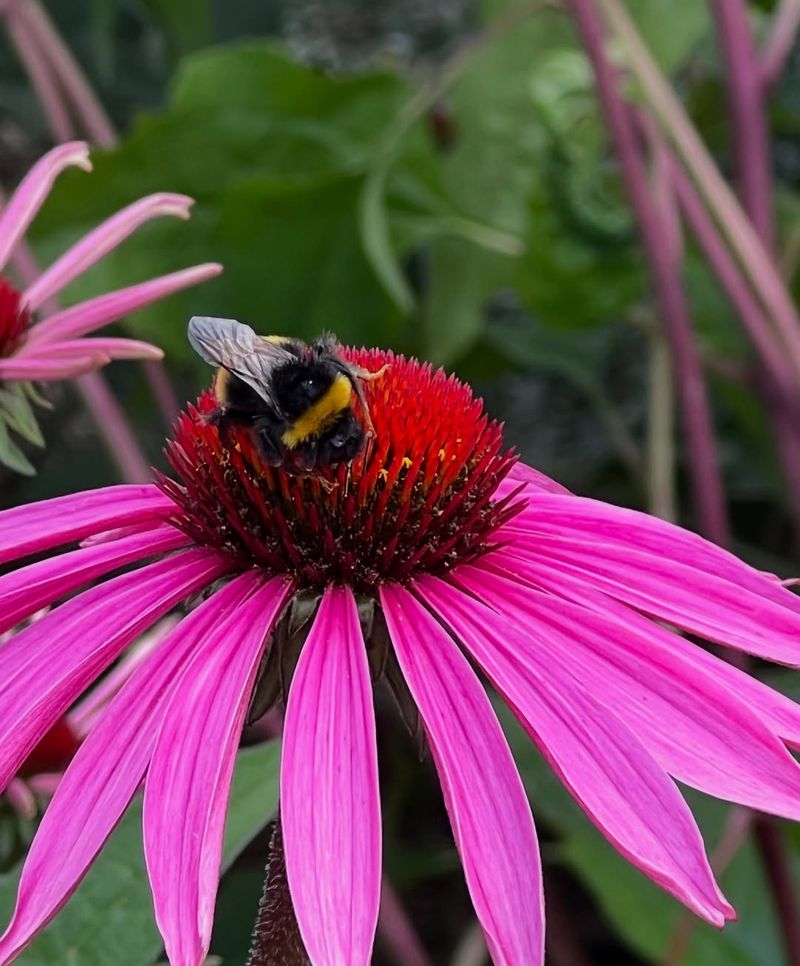If you’re gardening in Texas and want to see more butterflies fluttering around your yard, there’s one flower that does the job better than most. Purple coneflower has earned a quiet reputation among local gardeners as a reliable way to bring winged visitors right to your doorstep.
It thrives in our heat, asks for very little care, and keeps pollinators coming back all season long.
1. Nectar-Rich Blooms Keep Butterflies Fed All Summer
Butterflies need consistent fuel, and this plant delivers exactly that. Each flower produces nectar that attracts swallowtails, monarchs, and painted ladies from late spring through early fall.
In my experience, once these blooms open, you’ll notice an immediate uptick in butterfly activity. The central cone stays productive for weeks, even as petals start to fade.
For Texas gardeners dealing with long, hot summers, having a dependable nectar source makes all the difference in supporting local pollinator populations.
2. Handles Scorching Heat Without Complaint
Texas summers can be brutal, and many flowers just give up when temperatures soar past 100 degrees. This one doesn’t.
I’ve noticed that even during the worst heat waves, these plants keep their blooms intact and continue attracting butterflies. They don’t wilt or go dormant like other perennials might.
Once established, they develop deep roots that tap into moisture below the surface. That resilience means less watering for you and more reliable blooms for passing butterflies, even when the weather turns unforgiving.
3. Low Water Needs Make It Ideal For Drought-Prone Areas
Water restrictions are common across Texas, especially during dry spells. This plant adapts beautifully to those conditions.
After the first growing season, it rarely needs supplemental watering unless you’re facing an extreme drought. The root system becomes efficient at finding moisture on its own.
For me, that’s been a huge relief. I can focus my watering efforts on vegetables or annuals while knowing the coneflowers will keep blooming and feeding butterflies without constant attention or worry about water waste.
4. Native Status Means Better Adaptation To Local Conditions
Because this plant is native to North America, it’s already equipped to handle Texas soil and climate quirks. It doesn’t need special amendments or fussy care routines.
One thing I’ve learned is that native plants naturally support native butterflies better than imports. They’ve evolved together, so the relationship just works.
You’ll see butterflies recognizing these flowers instinctively. They know where to go for food, and that familiarity translates into more frequent visits and healthier pollinator populations in your garden year after year.
5. Seeds Provide Winter Food For Migrating And Resident Birds
Once blooms fade, the seed heads become a valuable food source. Goldfinches and other small birds love them, especially during fall and winter months.
I always leave a few spent flowers standing instead of deadheading everything. It’s rewarding to watch birds land on the dried cones and pick out seeds.
This dual benefit means your garden supports butterflies during the growing season and then shifts to feeding birds when temperatures drop. It’s a simple way to extend wildlife value beyond just one season.
6. Easy Propagation Lets You Expand Your Butterfly Garden Quickly
If you want more plants without spending extra money, this one makes it easy. Seeds germinate reliably, and established clumps can be divided every few years.
In my garden, I’ve started dozens of new plants just by collecting seeds in late summer and scattering them in other beds. By the next spring, seedlings pop up without any special treatment.
That means you can fill larger areas with butterfly-attracting blooms without breaking your budget, creating more habitat and more nectar sources across your entire yard.
7. Long Bloom Period Extends Pollinator Support Through Multiple Generations
Butterflies go through several generations in a single Texas growing season. This plant blooms from May through September, covering nearly the entire warm-weather cycle.
That extended flowering window means you’re supporting multiple butterfly life stages. Early-season adults, midsummer hatchlings, and late-season migrants all benefit from the same plants.
For me, that continuity is what makes this flower so valuable. It’s not a short burst of color followed by nothing. It’s steady, reliable support that keeps butterflies returning week after week.
8. Minimal Pest Problems Mean Healthier Plants And More Butterflies
Healthy plants attract more butterflies, and this one rarely struggles with serious pest issues. Aphids might show up occasionally, but they’re usually managed by beneficial insects without intervention.
I’ve noticed that gardens with fewer chemical treatments see more butterfly activity overall. This plant naturally resists most pests, so you won’t need to spray anything that could harm pollinators.
That peace of mind is important. You can enjoy watching butterflies without worrying that your pest control efforts are working against the very wildlife you’re trying to support.

